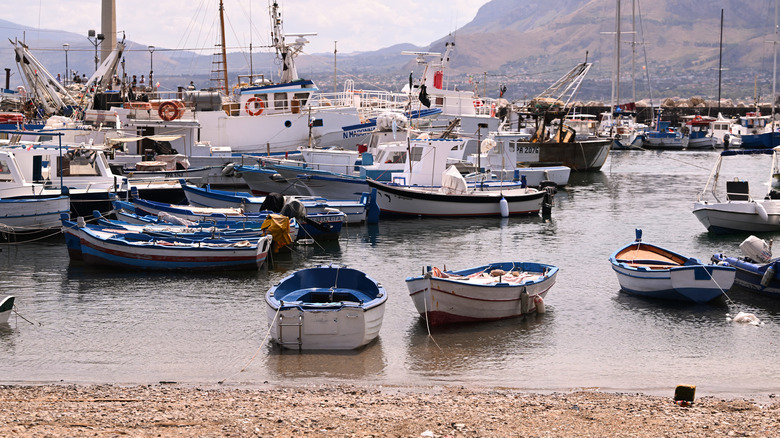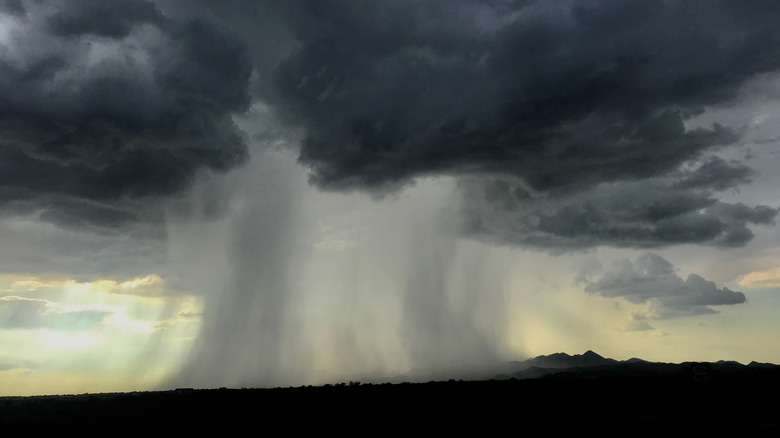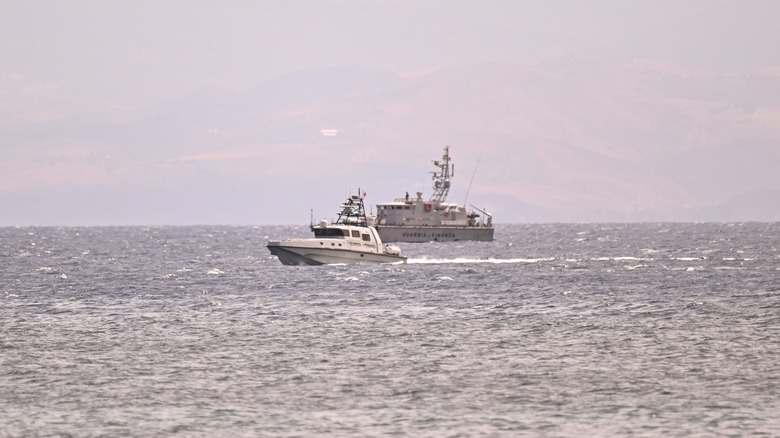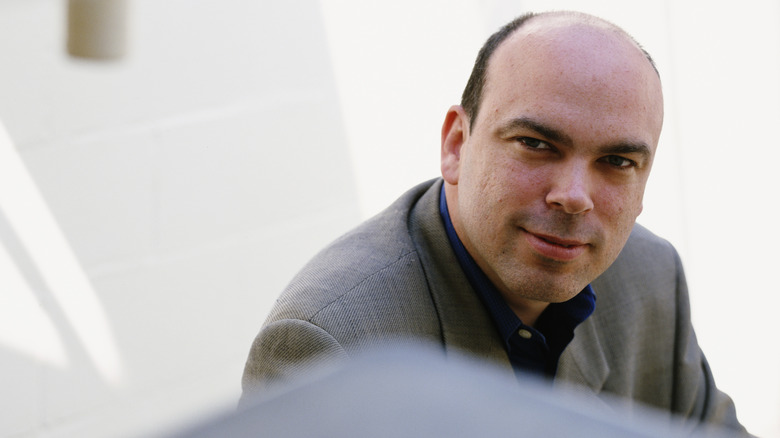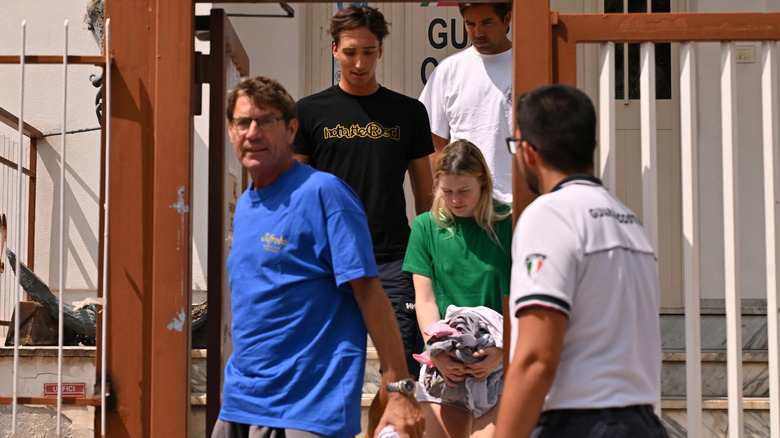The Biggest Twists In The Bayesian Superyacht Disaster Investigation
It began its time at sea as the Salute. Launched in 2008, the superyacht was the fifth in a series by shipbuilders Perini Navi and Ron Holland Design. It boasted the tallest aluminum mast on earth (75 meters) and the distinction of being the first cruising yacht to utilize sophisticated safety technology previously reserved for racing ships. The Salute was as stylish as it was reportedly safe, winning an award for its interior design the same year it hit the water.
Originally owned by a Dutch real estate developer, the Salute changed hands (for millions of dollars) in 2014. On paper, the owner was Revtom, a company controlled by Angela Bacares. Practically, it belonged to Becares' husband, Mike "British Bill Gates" Lynch, who rechristened the ship Bayesian to reflect his economic interests. Under its new name, the vessel sailed for years without incident, held up to inclement weather, and was refitted in 2020. The Bayesian's make and history helped contribute to the sense of shock and tragedy that came when it sank off the coast of Sicily on August 19, 2024. Not only was the ship lost, but Lynch, his daughter, and five other people died.
As of this writing, investigation into the incident is ongoing, and there remain many unanswered questions as to how the ship was lost. But preliminary reporting and inquiry has brought to light several twists in the story of the yacht's final days. Here are some of the biggest developments in the case to date.
The forecast had already warned the Bayesian that a storm was coming
Initial reports indicated that the Bayesian sank after being hit by a waterspout, but it was later surmised by prosecutors that it had been a downburst, a violent and concentrated burst of wind from a thunderstorm. Sicily had been under extreme heat for several days prior, and the atmosphere was charged for violent storms. Heavy rain and strong winds had been forecasted for the day the Bayesian was anchored off the coast of Porticello.
Such forecasting has complicated the claim of James Cutfield, captain of the Bayesian and one of 15 survivors from the shipwreck. "We didn't see [the storm] coming," he told La Repubblica (via The Guardian). When the storm did come, it was more severe than initially predicted, but some have argued that the forecast was strong enough that Cutfield and his crew should have implemented precautions anyway. At the least, they should have had their passengers up and wearing lifejackets, and there should have been more than one crew member on watch.
But a downburst or a waterspout, both violent and fast-forming phenomena, could have come on with little warning, leaving the crew no time to respond. Even without such an event, the storm produced winds well in excess of 62 miles per hour, the force experts told La Repubblica was sufficient to blow the Bayesian over (via the BBC). In any event, based on the time between the ship's loss of power due to water damage and when it vanished from GPS, it's been estimated that those aboard would have had 16 minutes before the ship fully sank.
The circumstances have encouraged speculation of lax precautions
Though the Bayesian took enough damage to lose power 16 minutes before going under, when it finally sank, it did so within 60 seconds, a fact that has baffled experts. Monica Jensen, who worked on the yacht for nearly two years as chief stewardess, told The Telegraph that the vessel had sailed all over the Atlantic, sometimes in inclement weather, and held up just fine. Gabriele Bruni, a competitive racer and Olympic coach, told The Guardian that the Bayesian was an ideal ship to ride out a storm. And its sister ship, Rosehearty, has withstood harsh winds and inhospitable conditions without issue.
There were also other ships in the water that night, including the yacht Sir Robert Baden Powell. They managed to ride out the storm. Their survival, the Bayesian's quick sinking, and the weather forecast for the day have fueled suggestions that human error was responsible for the disaster. Jensen told The Telegraph that the ship's yacht's crew regularly drilled on safety and evacuation. But Giovanni Costantino, head of the ship's construction firm, was convinced the crew were at fault, telling the BBC that they most likely neglected to batten down the hatches, turn on the engine, and lower the keel.
At this date, those claims cannot be verified. The captain of the Sir Robert Baden Powell told Reuters he didn't think Bayesian's crew did anything wrong. And the captains' union has called for restraint in speculation before the facts are in.
Mike Lynch and other casulaties were found days later
The fifteen survivors of the Bayesian disaster managed to get aboard the ship's inflatable life raft, where they were picked up by a neighboring Dutch ship that had seen a distress flare. Among the survivors was Angela Bacares, the woman whose business was the registered owner of the Bayesian. Left unaccounted for were Mike Lynch, his daughter Hannah, and five other people. Bacares initially refused medical care in her worry over her husband and daughter.
Authorities immediately began searching for the bodies of the missing, and the wrecked ship's location was readily apparent. But at a depth of 50 meters, while not the deepest shipwreck ever, the investigation was slow going . After several days, they located five bodies in a single cabin on the left side of the ship, and another in its own cabin farther down but still on the left. Eventually, all bodies were accounted for, and all seven missing persons were confirmed dead: Mike and Hannah Lynch, Jonathan and Judy Bloomer, Christopher and Neda Morvillo, and Recaldo Thomas. It's assumed that the seven dead tried to take shelter on the left side of the ship because it was the last place to have air pockets. The search for their bodies also found that the cabin doors were blocked by furniture.
The captain and crew are under investigation
Shortly after being rescued from the Bayesian disaster, the ship's captain found himself facing another storm — the legal kind. James Cutfield was brought under investigation by Italian authorities. Formal notice to Cutfield was necessary for the victims of the sinking to be autopsied. He was interviewed twice before notice was issued and he was advised to find himself a lawyer. Cutfield has, to this date, opted to remain silent on the matter, though his lawyer told The Guardian that the experience has been a traumatic one for the captain.
In the Italian legal system, being put under investigation is not a guarantee that charges will follow, and it doesn't necessarily indicate that the investigated is guilty or even suspected to be guilty. But if charges are brought against Cutfield, they're likely to be for manslaughter and culpability in the shipwreck. The New Zealand-born captain isn't the only one facing investigation either — two British crewmembers, the watchmen on the night of the sinking and the man responsible for the engine room, have also received notice. Prosecutors have said they would need to salvage the ship for their investigation, but whether that's possible or feasible remains an open question.
